Posts Tagged ‘veterinarian’
Can My Pet Be Lactose Intolerant?
 Did you know your pet can be lactose intolerant – and why this happens? We all see the commercials and the pictures of dogs and cats drinking milk out of children’s cereal bowls. But just because they eat it, does that mean it is the safe and advisable thing to do?
Did you know your pet can be lactose intolerant – and why this happens? We all see the commercials and the pictures of dogs and cats drinking milk out of children’s cereal bowls. But just because they eat it, does that mean it is the safe and advisable thing to do?
Lactose vs. Lactase
With lactose intolerance, the pets don’t possess the lactase enzyme to break down the lactose, which is a sugar. Lactase is an enzyme that breaks down and helps the digestive system to process lactose. The higher the lactose content, the less likely that your pet will be able to enjoy the aftermath, regardless of how happily it eats, drinks, or laps it up.
Without the lactase, the pet simply cannot digest the milk products and acute intestinal symptoms almost always arrive. These clinical signs can include:
- diarrhea
- abdominal pain
- bloating, nausea
- vomiting
These are all fairly typical indications of gastrointestinal distress. Sometimes a pet will drink excessive amounts of water when suffering from lactose intolerance, since diarrhea and vomiting are associated with it, causing the pet can be susceptible to dehydration.
I know that I will be presented with the argument that puppies and kittens drink mother’s milk at birth and is the primary source of nutrition for them. But as they grow older, their lactase production has decreased dramatically, therefore they do not produce enough to break down the lactose in milk. Another contributing factor is the fact that cow’s and goat’s milk have about twice the amount of lactose compared to a dog’s or cat’s milk. This high level can overpower the pet’s ability to digest it and can often lead to diarrhea.
Even though pets with milk intolerance can exhibit clinical signs, they can, under some circumstances, have some dairy products such as cheese and unpasteurized yogurt that usually have the lactose removed or broken down through bacterial actions. As a result, these products are ofter tolerated well in pets that would otherwise get diarrhea.
The general rule of thumb for pets and dairy products of all varieties is that they need to be low in lactose, low-to-no sodium, and with as little artificial preservatives and sweeteners as possible. If you feel compelled to give your pet a dairy product, do so in small amounts to establish your individual pet’s tolerance. Proceed with caution, and as with anything else, don’t hesitate to contact our office if you have any questions.
What To Look For If Your Pet Is Bitten By A Tick
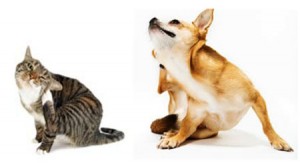 With the spring weather rapidly approaching, you and your pet are probably excited to get out and explore the great outdoors. However, lurking in the woods are some old eight-legged nemesis’ that can cause harm to your pets. If your pet is bitten by a tick, it can spread harmful diseases through their bites.
With the spring weather rapidly approaching, you and your pet are probably excited to get out and explore the great outdoors. However, lurking in the woods are some old eight-legged nemesis’ that can cause harm to your pets. If your pet is bitten by a tick, it can spread harmful diseases through their bites.
Each year thousands of dogs are infected with dangerous tick-transmitted diseases-with the risk rising. Between 2006 and 2010 there was a 30 percent increase in the rate of dogs exposed to tick-transmitted diseases.
Ticks are parasites that attach themselves to dogs and cats, feed on their blood and transmit diseases directly into the their system. There are many tick-borne diseases seen throughout the United States. Some of the major tick-borne diseases that are seen in the Midwest include:
- Lyme disease, which is spread by the deer tick, can cause enlarged, swollen and sore joints with a loss of appetite, fever and fatigue. Severe cases can lead to kidney disease and heart disease. There are vaccines that are available for dogs to prevent the dog from getting infected with it.
- Canine ehrlichiosis, Carried by the brown dog tick, this disease is the most common and one of the most dangerous tick-borne disease organisms known to infect dogs. This disease can cause depression, anorexia, fever with stiff, painful joints and bruising. Severe cases may include dogs suffering with seizures. There are no vaccines available. If it is diagnosed, antibiotics are used to help control the bacterial numbers in the dog.
- Anaplasmosis, also called dog fever or tick fever, is transmitted from the deer tick. It is seen in both dogs and cats. Like most of the other related diseases, clinical signs include pain in the joints and fever. Anaplasmosis can also cause diarrhea and nervous system disorders. The clinical signs usually persist about 2 weeks after the tick bite. It is also treated with long term antibiotics.
- Rocky Mountain Spotted Fever comes from the American dog tick, the wood tick and the lone star tick. Symptoms include fever, stiffness, neurological problems and skin lesions. Typically the illness last about two weeks, but serious cases can result in death.
- Babesia is a protozoan organism that is transmitted to dogs and cats from the American dog tick or the brown dog tick. This protozoan then attaches to the red blood cells and causes anemia. Severe signs in dogs include pale gums, depression, dark-colored urine, fever and swollen lymph nodes. Collapse and shock can be seen in severe cases. There are no vaccines available.
- Tularemia is seen more in cats than dogs. With this disease in cats, a high fever, swollen lymph nodes, nasal discharge or abscesses may be seen. Dogs tend to present with a reduced appetite, depression, and a mild fever.
- Hemobartonella is a tick-borne disease that causes the red blood cells to break down leading to anemia and weakness. In cats it is known as Feline Infectious Anemia. Treatment consists of long term antibiotics with blood transfusions possibly necessary in severe cases.
- Tick paralysis is caused by a secreted toxin from ticks. It affects the dogs’ nervous system with weakness starting in the rear legs and progressing to all four legs followed by breathing and swallowing difficulties.
The key to curing tick-borne disease is early diagnosis and treatment. Several broad-spectrum antibiotics are generally effective, especially in the early stages of the disease. Since antibiotics don’t differentiate between the “good” and “bad” bacteria, you may want to add a probiotic to avoid gastrointestinal problems. Be sure to follow the advice of your veterinarian.
There are numerous products and medications available to prevent ticks on your pet over the counter and from your veterinarian. No method offers 100 percent protection. If you have a field dog, they are vulnerable to tick-borne diseases because of the time spent in the tick-infested environment. So owners should diligent about applying topical and systemic treatments before outings. It is important to check your pets daily during the tick season and be removed properly if present. Ticks need to be embedded at least 24 to 48 hours to spread infections, so if checked every day, then the risk of infections being spread are lessened.
Tick-borne disease can rebound rapidly if your pet’s treatment only succeeded in suppressing rather than killing ticks. Since recurring tick diseases are harder to control or eradicate, don’t relax too soon if your pet recovers. Make sure that your pet has recovered completely and give it time to get back to recover completely. To further protect your pet, remain vigilant with regular blood work to detect recurrences.
Finally, to make an informed decision about protecting your pet from tick-borne diseases, talk to your veterinarian about the best tick-control approach for your dog.
How To Conquer Mealtime With A Picky Pet
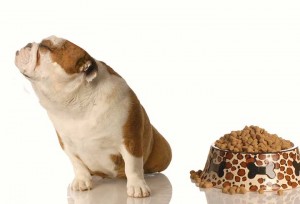 Do you have a picky pet? There is actually a difference between a picky and a finicky eater. A picky eater will occasionally refuse to eat and can easily be tempted with a slice of cheese added to his bowl. A finicky eater is a dog that has decided to give up dog food for good.
Do you have a picky pet? There is actually a difference between a picky and a finicky eater. A picky eater will occasionally refuse to eat and can easily be tempted with a slice of cheese added to his bowl. A finicky eater is a dog that has decided to give up dog food for good.
Have you ever wondered why your dog refuses to eat its food? If you give your pet treats or table scraps all day, it may just turn up its nose if you give plain dog food. If you are going to give your pet bacon or steak for breakfast, would you blame it for shying away from just the dog food? Chances are you might just be able to answer your own question by looking in the mirror. By caving in and giving those treats, you may have created a “monster” that becomes finicky or picky.
If there is no disease or illness present, then you just may have a finicky or picky eater. A picky dog will maintain its healthy weight, be alert and playful. It will also have a shiny coat, and is usually not a concern. When it suddenly stops eating, dropped a few pounds, and has a less lustrous hair coat, these symptoms may be a sign of illness or disease. In this situation, I would recommend a veterinary check-up as soon as possible.
So if you just have a finicky eater, here are some ways to persuade it to eat.
- Tone down the treats- A finicky eater is more likely to eat if it is not comparing its dog food to a liver treat.
- Feed often- Try feeding smaller amounts of its regular food three to four times a day. Set the food out for 30 minutes. If it isn’t eaten, pick it up and offer it again later. By doing this, you are helping your dog learn that no other option will exist. Don’t give in! Eventually, your dog will eat if it is hungry.
- Exercise- It is good for so many things and it increases a dog’s hunger. Try always exercising your pup before a meal.
- Spay or Neuter- If you haven’t already, fix your pup. Besides the many health and behavioral benefits, it can help prevent a finicky eater.
- Make it positive- Always make feeding a positive experience. By keeping feeding time positive, the overall experience will also provide positive reinforcement for your pet. Praise your dog when he eats his food and give him attention only after the meal is gone.
- Keep it quiet- Feed your dog in a quiet area without children or other dogs mulling around.
- Try different times- Some dogs eat better in the afternoon, others eat better an hour after you are home. Test it and see what time and situation work best for yours.
- Resist temptations- Try the other tips before giving into the urge to tempt your pup to eat with people food. You’ll find that a few pieces of cooked chicken will perhaps tempt him for a time but he’ll soon grow bored of that too.
Above all, be patient with your dog and watch it closely for signs of illness. Work with your veterinarian or a dog behaviorist if you are concerned about its health. Time, self-discipline, and consistency will do much to cure the finicky eater. Eventually, “my dog won’t eat” will become a thing of the past! If you are still struggling, contact our office so we can help!
8 Pet Products Dr. Olsen LOVES
 The pet industry is a multibillion dollar industry, with a lot of pet products that help and keep our pets comfortable and happy. Quite frequently, I am asked for recommendations from my clients pertaining to new products out there for their pets. With that thought in mind, and since you may want to get them something for Valentine’s Day, I have compiled a list of eight products and toys that I think are worthy for consideration to keep your pet happy, safe, and entertained.
The pet industry is a multibillion dollar industry, with a lot of pet products that help and keep our pets comfortable and happy. Quite frequently, I am asked for recommendations from my clients pertaining to new products out there for their pets. With that thought in mind, and since you may want to get them something for Valentine’s Day, I have compiled a list of eight products and toys that I think are worthy for consideration to keep your pet happy, safe, and entertained.
Zylkene: This is a product that helps pets cope when facing unusual and unpredictable situations or before occasions such as a change in a normal environment. It is made from the milk protein, casein, that promotes relaxation. I have seen it work on both cats and dogs on several scenarios, like introducing a new pet or bringing in a new baby to the family. It is nonmedicinal, so it is very safe. This product is available at our office.
The Furminator Comb: This is a rugged comb that removes any coat that has shed from the pet’s skin. The normal hair cycle is 4 to 6 weeks, so using this comb weekly will help remove the undercoat which causes the majority of the shedding problem. So in time there is reduced shedding. These are available online.
Oravet Dental Hygiene Chews: A brand new product out there that will be available in March is the Oravet Dental Hygiene Chews. They are dental chews that contain Delmopinol which works to loosen and dislodge plaque to help it break away from the teeth. It then forms a barrier to help protect agains bacteria that leads to the plaque and calculus buildup. This leads to fresher and cleaner breath which makes the pet and owner happy. We will have this at our office when it is available in March.
Pill Pockets: Some pets despise having their owners shove down an antibiotic, so this is a product that aids in getting your pet to take it. It hides the pill in a tasty treat, so your pet is happy. It is a healthier alternative to using human foods and comes in several flavors with less calories, less sodium and less fat. These are also available online.
Nexguard and Bravecto: These are chewable beef flavored tablets that kill fleas and ticks before they lay eggs. They both work very rapidly and have very few sides effects. The difference between the two is that the Nexguard is given monthly and the Bravecto controls the fleas and ticks for 12 weeks. Nexguard is safe to be given to puppies as young as 8 weeks, while the Bravecto is recommended to only be used on dogs 6 months and older. These are available in our office.
Kong Toys: These toys are made of durable rubber in a variety of formulas to provide dogs and appropriate way to fulfill their chewing habits. By chewing on them, they can help keep your dogs jaws strong and teeth white. Some are made to slow down eating and provide a vice when the owner is away. Here is the website, but they are available multiple places online.
Kong Cushion: This was formerly known as the Boobooloon. It is a blown up device that provides better relaxation and comfort for pets during recovery from surgeries, injuries, and rashes. This gives the pet better range of motion than the old type of e-collar. These are also available multiple places online.
Capilex: Nothing is worse than stepping barefoot in a freshly hacked-up hairball from your cat. Most petroleum-based products such as Laxatone just moves the hairball out of the intestine. Capilex is a whey based product that controls the hairball by breaking down the hairball, allowing the previously trapped food in the hairball to be digested, and made nutritionally available to your cat. The hair is then naturally passed in the stool, with fewer hairball. Capilex does not require a diet change or rely on fiber for its effect, so you can feed the diet that is best for your cat. This is available in our office.
The pet industry is constantly evolving, so some of these products and items may come and go. If you have a question or comment, or wish to purchase any of the above items, please don’t hesitate but give us a call.
Does Your Dog Have Diabetes?
 Diabetes mellitus is a common disease that is caused by either the lack of insulin or an inadequate response to insulin. It persists in anywhere between 1 in 100 to 1 in 500 dogs.
Diabetes mellitus is a common disease that is caused by either the lack of insulin or an inadequate response to insulin. It persists in anywhere between 1 in 100 to 1 in 500 dogs.
Diabetes typically occurs when dogs are between 4 to 14 years old. The primary cause is unknown, but experts suggest that genetics may play a role. Any breed can be affected, but breeds that tend to have a greater risk for developing canine diabetes are:
- Cocker Spaniels
- Dachshunds
- Doberman Pinschers
- German Shepherds
- Golden Retrievers
- Labrador Retrievers
- Pomeranians
- Terriers
- Toy Poodles
Knowing the signs of diabetes is the key to protecting your pet. Proper treatment can lead to a long, happy, healthy and active life. If any of these statements or symptoms describe your pet, I would recommend talking to your veterinarian about the possibility of diabetes:
- Drinks more water than usual
- Urinates more frequently, produces more urine per day, or has “accidents” in the house
- Always acts hungry, but just maintains or is losing weight
- Has cloudy eyes
A veterinarian will check your pet’s general health and may ask about the previous signs. This can rule out the possibility of other infections or conditions. Your veterinarian will probably check your dog’s urine for the presence of glucose and ketones and, if indicated, will measure the blood glucose concentration in your pet. A definitive diagnosis only is definite when glucose is found in the urine and a persistantly high concentration in the blood.
If your pet has diabetes, the goal is to manage the diabetes by keeping the glucose concentrations regulated, avoiding spikes and drops, and to reduce or eliminate the clinical signs of this condition, such as excessive thirst and urination. Although diabetes can’t be cured, it is not unreasonable to expect that the condition can be successfully managed with daily insulin injections and changes in your pet’s diet and lifestyle.
Once your pet is on the daily insulin injections, it will be important to monitor the blood glucose concentration and keep it to as close to normal as possible. You don’t want the risk of hypoglycemia (low blood glucose) or other long term complications developing. This can be done using urine glucose test strips or blood glucose meters. By consulting with your veterinarian, you can decide what will work best for you and your dog.
Your pet’s diet plays a vital role in keeping the blood glucose regulated. Ideally, your pet should be fed exactly the same amount of the same diet every day and at the same times of day. Your veterinarian can determine how many calories your pet needs daily, based on his weight and activity level. Most veterinarians recommend a high-fiber, low-fat diet. The fiber slows the entrance of glucose into the blood stream and helps your dog feel full. Low-fat foods have fewer calories. So together, the diet can help your dog eat less and lose weight.
Make sure that your pet drinks plenty of water. Fiber takes water from the body and can cause constipation and other problems.
It is important that your dog continue to eat due to the fact that you cannot give insulin to a dog on an empty stomach. It can make him very sick due to the blood glucose level dropping to dangerous levels. So if your pet is not eating much, talk to your veterinarian. This may mean that he doesn’t like the food or it can mean that he is having diabetes-related complications.
Exercise is important for all dogs, but it may be even more important for dogs with diabetes. Exercise needs to be regulated because it affects the blood glucose concentrations in the diabetic dog. It is best to create a consistent exercise routine for your pet to avoid sudden changes in energy requirements. If you are concerned about your pet’s needs, just ask your veterinarian.
Regular check ups with your veterinarian can help identify changes in your pet’s condition. While you may feel that things are going well with your ability to care for your diabetic dog, visiting your veterinarian regularly will help you successfully manage the condition over time.
Diabetes isn’t a death sentence. So take a deep breath because with good care, your companion can lead a long healthy life. For more information, or if you have questions, don’t hesitate to contact our office.
Pet Obesity Awareness: Tips For Keeping Your Pet Slim & Trim
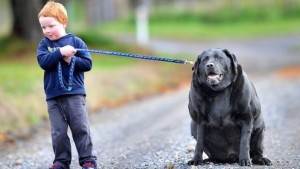 Do you know what 88.4 million dogs and cats have in common? They are obese. In a recent study, it was found that 53 percent of adult dogs and 55 percent of adult cats in the United States were classified as being overweight or obese by their veterinarians. Many of these pets were not characterized by their owners as being obese. So in simple terms, fat pets are the new normal in pet ownership.
Do you know what 88.4 million dogs and cats have in common? They are obese. In a recent study, it was found that 53 percent of adult dogs and 55 percent of adult cats in the United States were classified as being overweight or obese by their veterinarians. Many of these pets were not characterized by their owners as being obese. So in simple terms, fat pets are the new normal in pet ownership.
Even though they may be cute, being overweight may be detrimental to your pets health. These extra pounds can put the pets at risk to other disorders such as painful arthritis, heart disease, breathing difficulty, diabetes and even bladder cancer. Obesity not only affects your pets health but also their quality of life.
Certain pets are more likely to be obese. These factors include but are not limited to:
- Breed—Certain breeds such as the Labrador Retriever, Cocker Spaniels and Cavalier King Charles Spaniels tend to more likely affected.
- Age – Older dogs are less active, have less energy, and require less calories.
- Neutering/ spaying – Clinical trials have shown that the basic metabolism is lower in neutered dogs, so they require less calories.
- Medical Problems – Sometimes weight gain can be associated with a medical problem, so a specific treatment may be required.
- Overfeeding – This tends to be the most common problem. Dogs having an unlimited access to food tend to eat more than they need. Also many commercial foods are loaded with salt and fat to improve the taste. This could make your pet want to gorge.
- Feeding habits – Feeding table scraps and “people food” can lead to obesity
- Lack of exercise – As with people, too much food and too little exercise produces a typical result. Obesity
An owner can assess their pets’ weight at home and contact your veterinarian if you think that you have a problem. To do this, I would suggest the following.
- By running your hands along your pet’s ribcage, you should be able to palpate the ribs covered by a thin layer of fat. If you cannot feel the ribs, that could be a sign of an overweight pet.
- Look at your pet from the side. You should see an upward tuck of the abdomen. An overweight pet will have very little to no tuck.
- View your pet from above. There should be a moderate narrowing at the waist just past the ribcage. A straight or bulging line from the ribcage to the hips can indicate and overweight pet.
- A lot of pets will gain weight in the neck area. So if the collar needs loosening, this may indicate obesity.
The most effective way to achieve a healthy weight is to combine increased exercise with changes in your pet’s food or nutrition program. An exercise program should include walking your dog at a constant pace to help burn calories. The program should also include encouraging it to play in the yard or at home. Tossing a frisbee or a ball can also help burn excess calories. It is important to remember that when starting an exercise program, make sure that you ease into exercise. Because an overweight pet is more prone to injury.
A proper diet is essential for your pets overall health and well-being. Balanced nutrition is an important part of an active, healthy lifestyle. A low fat and low calorie diet is essential in helping your pet lose weight and stay fit. Fiber is also an important ingredient since it helps your dog eat less while keeping full. It is important to avoid table scraps and make sure that you account for the treats when considering how much to feed your pet during meals.
Weight loss is important, and your veterinarian is a good place to start. If your pet is obese, a veterinarian can help rule out ailments that can cause obesity and give you advice what foods might be best for your pet. Monitoring its weight loss is also important. A dog should typically lose about 1 pound per month, so monthly weigh-ins will help determine if the program is working for it.
Most things are easier said than done, but that doesn’t always need to be the case. Remember that you are your pet’s will power and are in control of its health. Allowing it to become obese is detrimental, and we know that you don’t want your pet leaving your side any sooner that it needs to. Maintaining a healthy weight is essential to maintaining a long, healthy life. With time and effort on your pet, it will be happier and healthier than ever.
Caring For A Deaf Dog
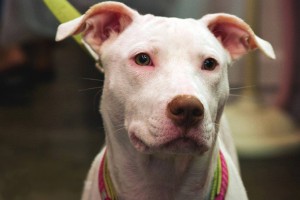 It is human nature for everyone to boast that they have the perfect family, including their pets. But sometimes life throws us a curveball and we have to adjust to make it the best possible. Our pets sometimes have impairments like deafness that make it harder for them to adjust to everyday life. During the third week of September we recognize this impairment as Deaf Dog Awareness Week. Whether it is congenital or acquired it can lead to frustrations in training the pet, which isn’t the pet’s fault.
It is human nature for everyone to boast that they have the perfect family, including their pets. But sometimes life throws us a curveball and we have to adjust to make it the best possible. Our pets sometimes have impairments like deafness that make it harder for them to adjust to everyday life. During the third week of September we recognize this impairment as Deaf Dog Awareness Week. Whether it is congenital or acquired it can lead to frustrations in training the pet, which isn’t the pet’s fault.
Deafness can be caused by some hereditary issues which is known as congenital deafness. Hearing loss can also happen due to an ear infection, injury to the ear or it may be due to old age. Loud noises may also cause hearing loss, as can certain drugs.
Congenital deafness is most commonly related to the white coats of dogs. The white coats have unpigmented skin which produces white hair. If there is unpigmented skin in the inner ear, the nerve endings atrophy and die off in the first few weeks of the puppy’s life, resulting in deafness. This deafness can affect both ears or it can affect only one ear.
Early signs that your pet may be deaf is that it plays more aggressively or bites too hard because it is not deterred by the other puppy’s yelp of pain. It may not awaken during feeding time unless it feels vibrations or is bumped by a littermate. The owner may notice that it doesn’t respond to being called when sleeping, too far away or looking at you. There are several tests that you can do at home to assess that your pet is deaf, but the most reliable method is BAER testing. It is 100% reliable in determining if your pet is deaf. This test is a procedure using computers to record electrical activity of the brain in response to sound stimulation.
Outside of the obvious physical defect, deaf dogs are just everyday normal dogs. They play, sleep, and share their lives with us as companions, but they just don’t hear. A person that discovers this will be often faced with many negative warnings from misinformed people but with proper training, your impaired pet can lead a happy and active life. There are very few health considerations that apply to all deaf dogs.
Most people think that they are hard to train which could not be farther from the truth. They just need to be trained with the positive reinforcement approach to training. Since they can not hear, they rely on using visual signs instead of sound. This can be an advantage, since they are more focused and doesn’t have the noise distractions from other pets in the class. They may need more available time spent with them to build a solid foundation for training. So a person that has little time to train them may not be a good match. It is also good to have them interact frequently with other people and dogs.
Since a deaf pet cannot hear, it may be best to take steps to assure their safety. To prevent them from running off, it is important to exercise them on a leash frequently or have them in a fenced area. There are vibration collars available that can aid in getting the dog’s attention to call them back with hand signals.
Pets are always perfect in our eyes, even though some of them are impaired to some degree. If you have any concerns or questions please feel free to contact us.
Three Keys To Water Safety For Dogs
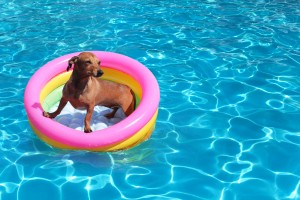 Oh, the sounds of summer! Many people and their pets will spend numerous hours this summer basking on a beach, boating in a lake, or even lounging by a pool in their own backyard. Many pets love being around water, but each year approximately 40,000 pets lose their lives in drowning accidents. You need to look out for your pet around water, since even the strongest, most enthusiastic swimmers can get into trouble. The keys to water safety for dogs are prevention, preparedness and awareness.
Oh, the sounds of summer! Many people and their pets will spend numerous hours this summer basking on a beach, boating in a lake, or even lounging by a pool in their own backyard. Many pets love being around water, but each year approximately 40,000 pets lose their lives in drowning accidents. You need to look out for your pet around water, since even the strongest, most enthusiastic swimmers can get into trouble. The keys to water safety for dogs are prevention, preparedness and awareness.
Prevention
Believe it or not, not all breeds are Micheal Phelps-type swimmers. For example, the Bassett Hound and English Bulldog just are not built for swimming, so it is important to have a secure fence and gate around your pool and never leave your pet unsupervised.
Make sure that your pet can get out of the pool. If it jumps or falls in, it may panic and drown. Even the strongest swimmers can tire easily.
If you are taking your pet boating or in a river or ocean, it may be wise to invest in a dog floatation device and use it. Just like people, it’s easy for your pet to develop a cramp and become exhausted too far from shore or get overwhelmed by the tides.
Preparedness
Since pools are filled with chemicals that control the water and algae, and lakes and ponds can be a common source for parasites, it may be a good idea to bring fresh drinking water for your pet. The chemicals and parasites can cause your pet to become ill, which may lead to vomiting, diarrhea and other health issues.
One of the best things that you can do is to take courses in pet first aid and CPR. These are available at many local Red Cross chapters and sometimes taught by a local veterinarian. A near-death dog rescued from the water may be saved by your prompt actions—if you know what to do.
As I mentioned before, if your dog isn’t much of a swimmer or is older and debilitated, get him a personal floatation device. These are especially great for family boating trips, because most have study handles for rescue when a pet goes overboard. It is also important to keep a long leash on the boat at all times in case you need to restrain your pet for any reason.
It is also important to bring fresh water to rinse off your pet after swimming to get out the chlorine and other pool chemicals, as well as bacteria and dirt he might get on him from an ocean or lake. Don’t let your dog sit in a wet collar as hot spots can develop as well.
Awareness
Be aware of your dog’s condition as he plays. Remember that even swimming dogs can get hot, so bring fresh water and offer it at every opportunity. When your dog is tiring, call it a day. A tired dog is a good dog, but an exhausted dog is in danger of drowning.
Be particularly careful with young and old dogs. Young dogs can panic in the water and old dogs may not realize that they aren’t as strong as they used to be. Keep them close to shore, and keep swimming sessions short.
During the hot summer, many dogs are drawn to water to cool off and swimming also meet your dog’s exercise needs with a low-impact option of movement. But accidents can happen in a hurry. So try to prevent these accidents by being prepared and aware. If you have any further questions, please feel free to contact us.
Should I Adopt A Cat Or A Dog?
 It is always a good time to adopt pets, but June has been designated cat adoption month. By far the most common pets are dogs and cats. If I asked a person the difference, I would probably get a strange look and an answer like “one barks and growls, where the other meows and purrs.” But there are other differences that affect them as to whether they may be the right pet for your family.
It is always a good time to adopt pets, but June has been designated cat adoption month. By far the most common pets are dogs and cats. If I asked a person the difference, I would probably get a strange look and an answer like “one barks and growls, where the other meows and purrs.” But there are other differences that affect them as to whether they may be the right pet for your family.
First off, dogs need to be cared for, whereas cats are independent. Dogs are descendants of pack animals. Dogs like company and will never be bored if one spends a lot of time with it. Their pack mentality allows the dogs to be trained more easily as they crave attention. On the other hand, cats love to spend a lot of time alone. Cats are solitary hunters that are more attached to their environment than they are to other cats.
The pack behavior also relates to how a dog is built physically. In the wild they are designed to run down their prey. This translates to dogs being built as long distance runners. Dogs need a lot of space as they love to run around. Cats are designed to stalk their prey. Their instincts lead them to sneak up on their prey and then pounce. This leads to cats being built more as sprinters rather than long distance runners. Contrary to dogs, cats are very happy in small places.
When looking at the nature of dogs and cats, the former loves to please you, but the latter always love to please themselves. Well, dogs are more affectionate when compared to cats. Dogs will wag their tail, and even their whole body, to show affection. A cat will only show affection by allowing you to scratch it behind the ears.
Unlike dogs, cats are lap animals. A cat will tolerate being smooched, but on the other hand, you will be smooched by a dog. Dogs are happy to see you when it is awaken from sleep, but a cat will just pretend to be sleeping, even if you try to wake it.
Dogs tend to be your friends at night and protect you from harms way by scaring the intruders. Cats, they will just run for cover.
By knowing your lifestyle, you can determine what pet is best for you. Dogs are more social, require more attention and space. Cats on the other hand tend to be happy being by themselves and don’t require as much attention and space. Both species can be rewarding pets.
If you have any questions about the right pet for you, please contact our office!
Questions For New Pet Owners To Ask Their Vet
 Congratulations! Welcome to the world of pet ownership. This might have happened to you over the holiday season. As responsible pet owners, it is important to keep your pet healthy and a good way to do that is to develop a relationship with a veterinarian. As with a person choosing their own physician, it is important to find a veterinarian that meets their needs, as well as getting the right sense of education, experience and personality.
Congratulations! Welcome to the world of pet ownership. This might have happened to you over the holiday season. As responsible pet owners, it is important to keep your pet healthy and a good way to do that is to develop a relationship with a veterinarian. As with a person choosing their own physician, it is important to find a veterinarian that meets their needs, as well as getting the right sense of education, experience and personality.
Before you meet with a potential veterinarian, learn as much about the practice as you can by reading the clinic’s website, search the vet’s Facebook or Twitter page and see what their clients are saying. Maybe look for testimonials and note any red flags that may present. It may be helpful to schedule a meeting with the veterinarian-not for an exam, but to see what chemistry the veterinarian has with your pet. And then take the information gathered and decide if maybe they might be a good fit for you.
A pet owner must consider the health of their pet and tailor questions to address any needs or conditions that he or she has, especially if your pet may need specialized care in the future. The owner needs to consider the veterinary clinic’s policies and make sure that they meet the owner’s criteria. As in almost every situation, communication is important. It is important that you can get in touch with your veterinarian when you need to. Make sure the practice and your specific vet have open lines of communication, and know all the channels you can use to contact them.
With that in mind, here are some possible questions that you may want to ask a new veterinarian.
- How many veterinarians are in the practice? Will you see the same veterinarian every time or do the doctors switch or rotate without notice?
- How far in advance does the practice typically schedule appointments?
- If you need same-day care, will the practice see you or refer you to an emergency veterinarian?
- What are the qualifications of the technical staff? If your pet needs a simple procedure can you see a tech or do you need an appointment with the main vet?
- If your pet has a specific disease or ailment, does the veterinarian have experience treating that condition?
- Are the veterinarians open to alternative treatments like chiropractic care or acupuncture?
- Does the practice offer emergency or after-hours care? If not, where would the practice send you?
- In case referral work is needed, where does the veterinarian send them?
- What is the best way to contact the veterinarian during the business day and after hours?
- Is the veterinarian willing to answer questions via email?
There are many good veterinarians in practice out there, so finding an appropriate one may take some time and extra research. But in the long run, the task may be less challenging and lead to fewer problems by taking time to find one that meets your criteria.
